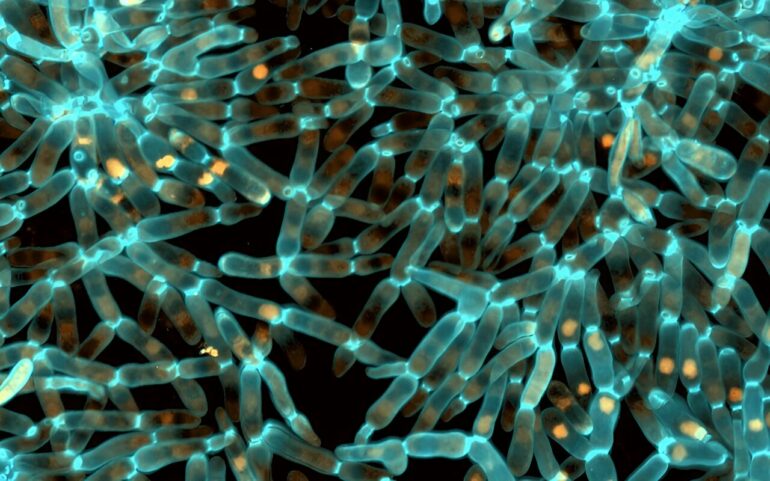Researchers have discovered a mechanism steering the evolution of multicellular life. They identify how altered protein folding drives multicellular evolution.
In a new study led by researchers from the University of Helsinki and the Georgia Institute of Technology, scientists turned to a tool called experimental evolution. In the ongoing Multicellularity Long Term Evolution Experiment (MuLTEE), laboratory yeast are evolving novel multicellular functions, enabling researchers to investigate how they arise.
The study, published in Science Advances, puts the spotlight on the regulation of proteins in understanding evolution.
“By demonstrating the effect of protein-level changes in facilitating evolutionary change, this work highlights why knowledge of the genetic code in itself does not provide a full understanding of how organisms acquire adaptive behaviors. Achieving such understanding requires mapping the entire flow of genetic information, extending all the way to the actionable states of proteins that ultimately control the behavior of cells,” says Associate Professor Juha Saarikangas from the Helsinki Institute of Life Science HiLIFE and Faculty of Biological and Environmental Sciences, University of Helsinki.
Snowflake yeast evolves robust bodies in 3,000 generations by changing cell shape
Among the most important multicellular innovations is the origin of robust bodies: over 3,000 generations, these ‘snowflake yeast’ started out weaker than gelatin but evolved to be as strong and tough as wood.
Researchers identified a non-genetic mechanism at the base of this new multicellular trait, which acts at the level of protein folding. The authors found that the expression of the chaperone protein Hsp90, which helps other proteins acquire their functional shape, was gradually turned down as snowflake yeast evolved larger, tougher bodies.
It turns out Hsp90 acted as a critically-important tuning knob, destabilizing a central molecule that regulates the progression of the cell cycle, causing cells to become elongated. This elongated shape, in turn, allows cells to wrap around one another, forming larger, more mechanically tough multicellular groups.
“Hsp90 has long been known to stabilize proteins and help them fold properly,” explains lead author Kristopher Montrose, from the Helsinki Institute of Life Science, Finland. “What we’ve found is that slight alterations in how Hsp90 operates can have profound effects not just on single cells, but on the very nature of multicellular organisms.”
Path to adaptive evolution through altering protein shapes
From an evolutionary perspective, this work highlights the power of non-genetic mechanisms in rapid evolutionary change.
“We tend to focus on genetic change and were quite surprised to find such large changes in the behavior of chaperone proteins. This underscores how creative and unpredictable evolution can be when finding solutions to new problems, like building a tough body,” says Professor Will Ratcliff from the Georgia Institute of Technology.
More information:
Kristopher Montrose et al, Proteostatic tuning underpins the evolution of novel multicellular traits, Science Advances (2024). DOI: 10.1126/sciadv.adn2706. www.science.org/doi/10.1126/sciadv.adn2706
Provided by
University of Helsinki
Citation:
New study discovers how altered protein folding drives multicellular evolution (2024, March 8)



